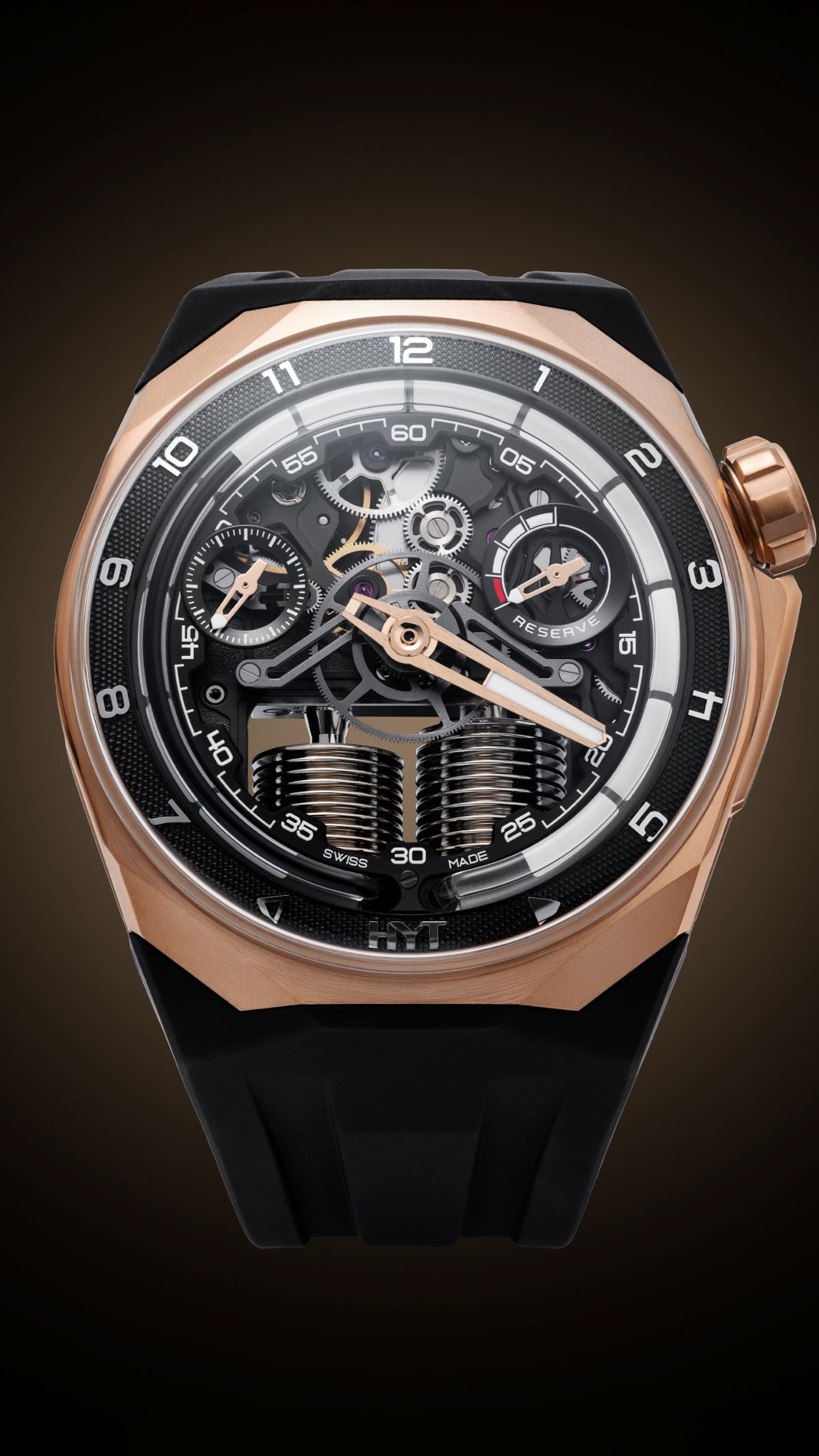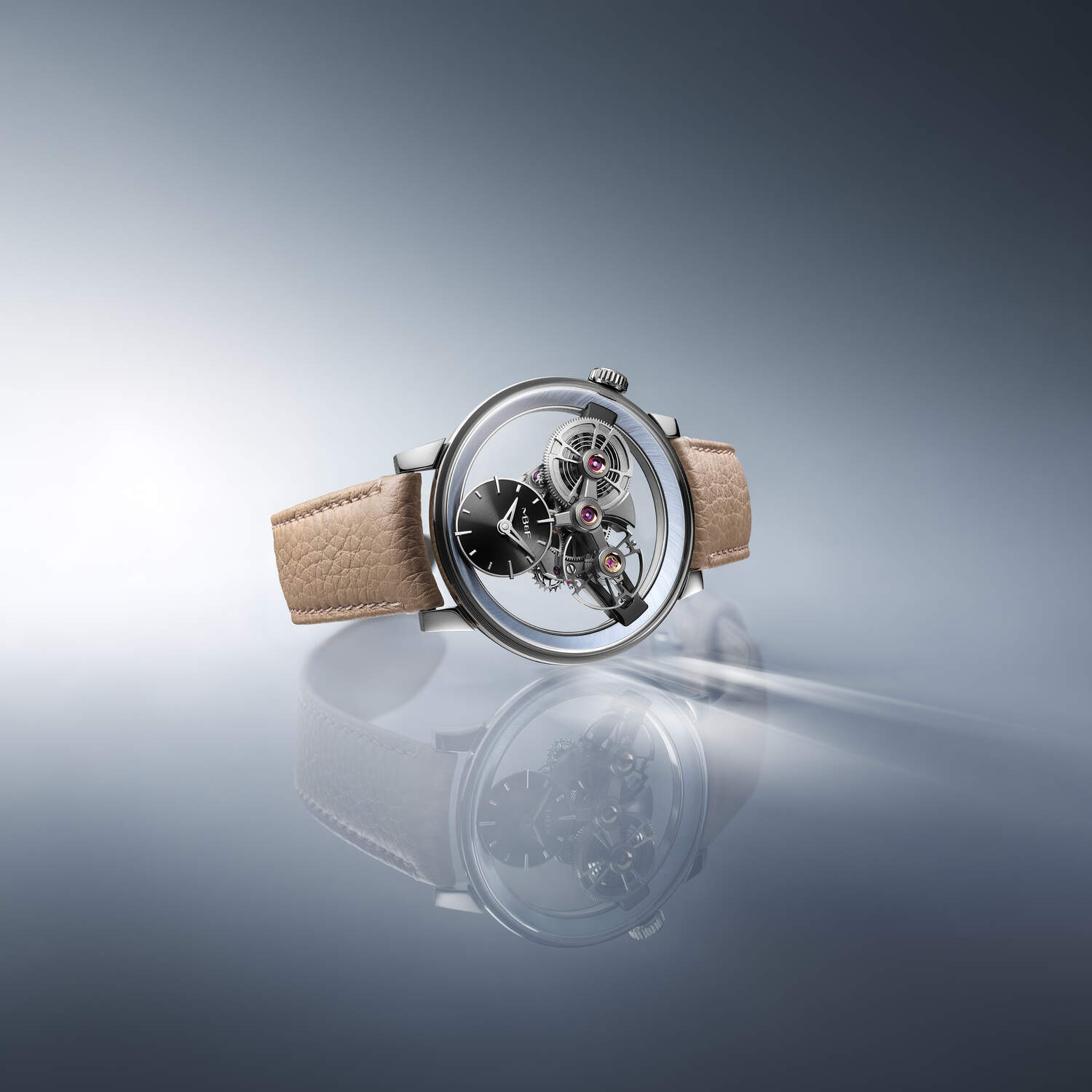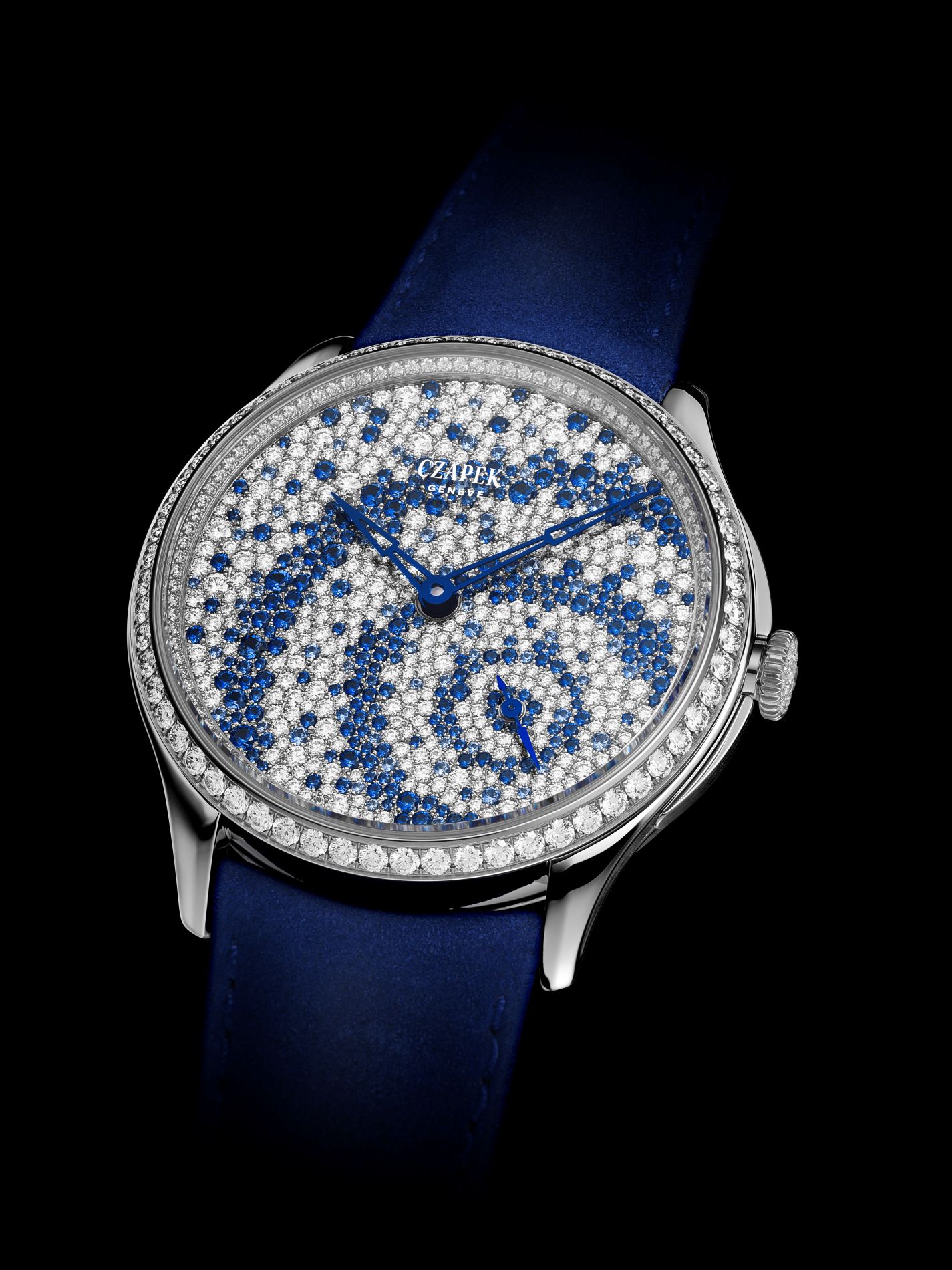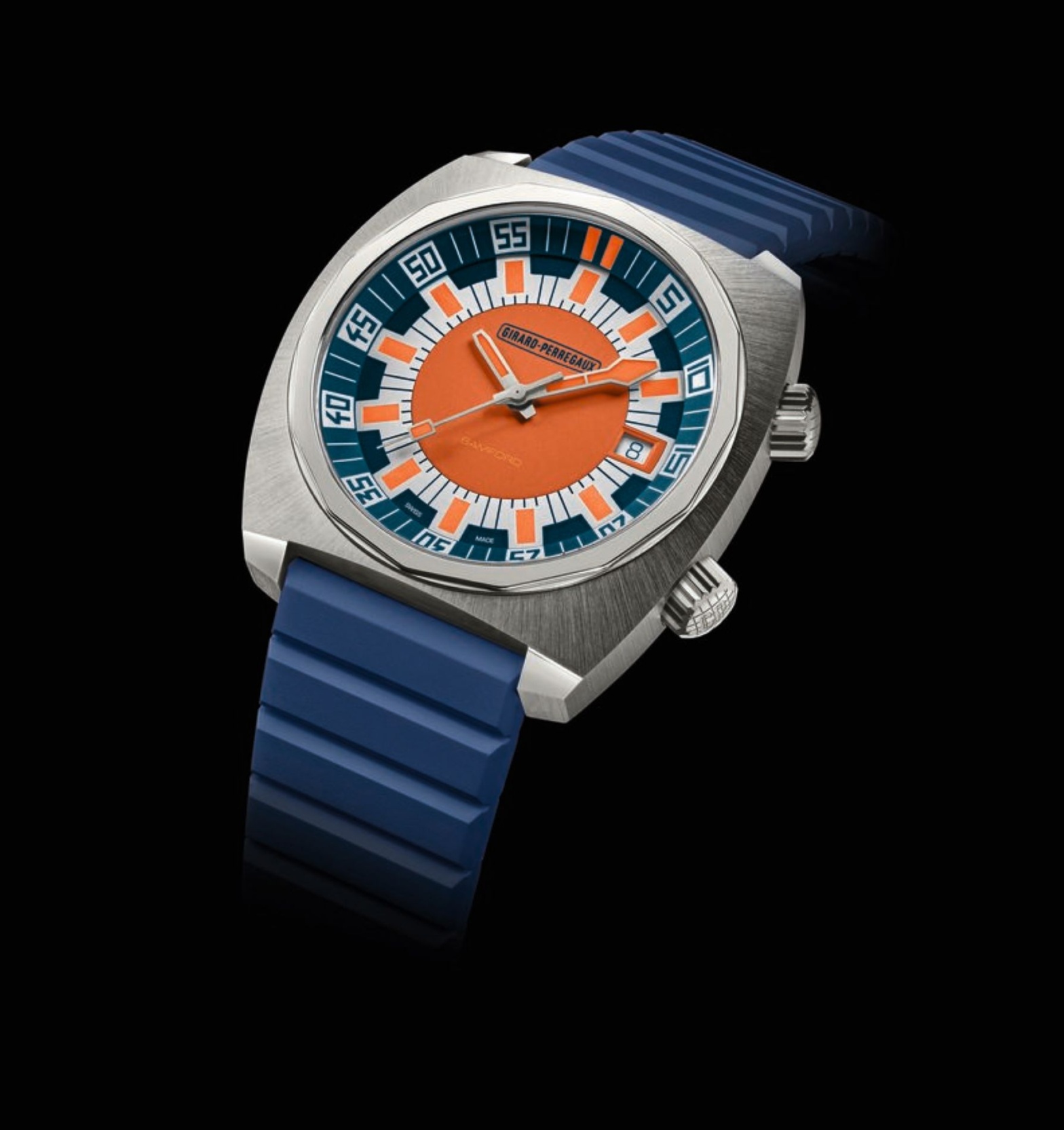To celebrate 100 years of its renowned Meisterstück writing instrument, Montblanc introduces a limited edition Star Legacy Nicolas Rieussec Chronograph with design elements from the iconic fountain pen
The Meisterstück Story
With its black cigar-shaped design, three gold rings and handcrafted gold nib, the Meisterstück has become synonymous with Montblanc as the Maison’s most recognizable product.
The writing instrument was initially created by Montblanc artisans for their own private use, as a testament to their passion for their craft and a demonstration of the savoir-faire perfected through the years. It was only after requests from some of the Maison’s clients for a more special fountain pen meant for finer “Sunday use” that they decided to make it available for sale. The year was 1924, one hundred years ago this year. Today, this iconic writing instrument remains a symbol of fine craftsmanship for Montblanc and one of its most recognizable products.
The writing instrument’s name – Meisterstück – is the German word for masterpiece. Initially, this word was translated for different markets, becoming chef d’oeuvre in French and capolavoro in Italian, for example. Today, the German name Meisterstück is used all around the world, serving as a reminder of the writing instrument’s German roots.

When a Writing Instrument and a Wristwatch Meet
Writing time was the original idea behind the Nicolas Rieussec timepiece as the first horological creation recording elapsed time using a fixed nib and ink. This year, to pay tribute to Montblanc’s renowned writing instrument and its milestone anniversary, the Maison is releasing a limited edition Star Legacy Nicolas Rieussec Chronograph Meisterstück 100 Years that has been inspired by the design codes of the fountain pen.
Montblanc Star Legacy Nicolas Rieussec Chronograph Meisterstück 100 Years
Limited to 500 pieces, the timepiece comes in a 43mm stainless steel case with an interchangeable black calf leather strap with alligator print. The connection to the Meisterstück can be found in numerous aesthetic details on both the dial side of the timepiece and on its caseback.
The black dial is adorned with luminescent printing that reveals a blueprint of the writing instrument from 1920. The off-centered hours and minutes dial also includes plans in its design, this time from the dimension table of the Montblanc emblem that can be found on the cap of every Meisterstück and on the crown of Montblanc timepieces.
Since the very beginning, the 4810-meter height of the Mont Blanc mountain has been intrinsically connected to the Meisterstück, with the figure ‘4810’ appearing through the years on its packaging, on its cap, and since the 1930s until today, on its nib. This significant number can also be found on the dial of the Montblanc Star Legacy Nicolas Rieussec Chronograph Meisterstück 100 Years, with the figures “48” and “10” positioned above the two rotating domed chronograph discs.
The Meisterstück is particularly recognized for its black-and-white aesthetic that is enhanced with golden touches. Likewise, the Montblanc Star Legacy Nicolas Rieussec Chronograph Meisterstück 100 Years features a host of golden touches, including a gold-colored bridge between the two rotating domes discs, rose gold-coated Dauphine hour and minute hands, and rose gold-coated Arabic numerals. These gold touches, combined with the stainless steel of the case also recall the bicolour design usually seen on the Meisterstück’s nib.
By turning the timepiece over, the oscillating weight can be observed through the caseback, revealing a specific decoration that is a nod to the world of handwriting with a delicate ‘8’; a symbol inspired by calligraphy movements.

The Choice of Timepiece
The Montblanc Star Legacy Nicolas Rieussec Chronograph has a close connection to the world of writing as the original horological complication that recorded elapsed time using a fixed nib and ink.
The story started on Saturday, 1st September 1821 at Paris’ Champs-de-Mars horse racing track where Nicolas Rieussec (1781-1866) was testing one of his latest inventions, a timekeeper designed to record the precise times of all the horses as they crossed the finish line. Nicolas Rieussec was not only the sixth royal watchmaker to the King of France; he was also a businessman with an eye for opportunity. Horse races in Paris at this time were big business and being able to scientifically record the winners was a game-changer for the sport.

How did Nicolas Rieussec’s Device Work?
Nicolas Rieussec’s device worked using a fixed nib that would place a drop of ink on two rotating counters (one for the minutes, the other for the seconds) each time a horse crossed the finish line. His invention was a success and a few weeks later, he presented it to the Academy of Sciences in Paris, whose members were fascinated by the timing device and named it a “chronograph” taken from the Greek word “chronos” for time and “graphein” to write. The word chronograph was born and Nicolas Rieussec became the inventor of the world’s first inking chronograph, leaving his mark in the history of fine watchmaking.
The Very First Montblanc Star Legacy Nicolas Rieussec Collection
Fast forward to the modern day and the year 2007, when Montblanc unveiled an intriguing wristwatch version of Nicolas Rieussec’s technology, featuring its first in-house movement. The configuration of Rieussec’s design was interpreted with two horizontally aligned chronograph counters, one for elapsed 60 seconds and the other indicating 30 minutes. Instead of each counter being static with its own rotating hand, the counters were the ones to turn and a single index marker placed between the two counters indicated the elapsed time.

In-House Movement
The Montblanc Star Legacy Chronograph Nicolas Rieussec is powered by the self-winding Manufacture monopusher chronograph movement MB R200 that was the very first in-house movement by the Maison.
As expected of a Manufacture Chronograph, it is equipped with a column wheel that controls the monopusher mechanism. To improve the chronograph’s start, the connection between the gear train and the chronograph’s wheels is alternately engaged and disengaged by a vertical disc clutch and functions without any wear and tear. This mechanism prevents the elapsed time discs from jumping when the chronograph is switched on. The timepiece features a monopusher, which is ergonomically positioned at 8 o’clock, where the wearer’s thumb can conveniently operate it.
Additionally, a rapid-reset mechanism for the hour and date is practical for travelers who journey from one time zone to another. These indicators can be reset either clockwise or counter-clockwise without affecting the position of the minute-hand. The rate is regulated by a large 10mm-diameter balance wheel with screws, which oscillates regularly thanks to its high moment of inertia (12 mgcm²) and its frequency of 28,800 A/h (4 Hz). The stable rate is further enhanced by the double barrel, providing approx.. 72 hours of power reserve. Furthermore, the balance bridge is open-worked, ensuring the precise positioning of the oscillator for optimal shock resistance.
The new Montblanc Star Legacy Nicolas Rieussec Chronograph Meisterstück 100 Years combines two of Montblanc’s treasured luxury creations into a special timepiece. Limited to 500 pieces, this special edition incorporates the best of Montblanc’s heritage into a highly contemporary chronograph for lovers of horological and writing instrument craftsmanship.









